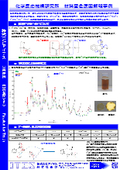[Data] Analysis and evaluation of organic materials and polymer materials.
Essential materials alongside metals and inorganic materials! Introducing examples of analysis and evaluation services for organic materials.
Organic materials such as solvents, additives, pharmaceuticals, and plastics are essential materials alongside metals and inorganic materials. They have a wide variety of types due to combinations of light elements, and their specificity arises from structures, intermolecular forces, and electron behavior. However, it seems that chemical instrumentation analysis and evaluation are necessary for a fundamental understanding of their properties. This document presents examples of analysis and evaluation services for organic materials. [Contents] ■ FT-IR analysis ■ GC-MS analysis ■ Molecular weight distribution evaluation by GPC (SEC) *For more details, please refer to the PDF document or feel free to contact us.
basic information
For more details, please refer to the PDF document or feel free to contact us.
Price range
Delivery Time
Applications/Examples of results
For more details, please refer to the PDF document or feel free to contact us.
catalog(30)
Download All Catalogs

News about this product(7)
-

Poisson's ratio measurement
At Aites Co., Ltd., we conduct "Poisson's ratio measurement." Poisson's ratio is the ratio of longitudinal to lateral strain that occurs when a load is applied to an object, and it is necessary for strength calculations of materials. In the downloadable materials, we introduce the results of attaching strain gauges to test specimens, applying tensile loads using a universal testing machine, and examining the longitudinal and lateral strains obtained from the strain gauges. Please feel free to download and take a look.
-

Analysis of organic-inorganic composite materials using FT-IR and EDX.
We will introduce an example of analyzing organic-inorganic composite materials using FT-IR and SEM-EDX. FT-IR measurements were conducted on the glossy and non-glossy areas of a PET bottle label, and the IR spectra differed between the glossy and non-glossy areas. Since the non-glossy area resembles the spectrum of acrylic resin, it is considered that the main component is acrylic resin. Additionally, SEM-EDX measurements were performed on both the glossy and non-glossy areas, and EDX spectra and backscattered electron images were obtained, revealing that the non-glossy area contained sulfur (S) and barium (Ba), which were not detected in the glossy area.
-

Micro FT-IR imaging measurement
We would like to introduce the "Microscopic FT-IR Imaging Measurement" that we conduct. It allows for the visualization of the distribution of substances as a two-dimensional image within a specified plane. It becomes possible to evaluate changes in the distribution of substances that are difficult to assess with regular point measurements through visual images.
-

Chemical Analysis Concierge Service
We would like to introduce our "Chemical Analysis - Trust Us Service." When conducting component analysis of foreign substances or stains on products, it can be challenging to determine whether organic analysis or inorganic analysis is more suitable, and which specific analysis within organic or inorganic is the most appropriate. We provide a comprehensive service for customers who are struggling with the selection of analysis methods. Since each analysis device can measure different targets, it is necessary to choose a method that fits the purpose based on the information available.
-

Raman UV-curable resin
Our company analyzes the spectra of UV-curable resins before and after UV irradiation. We irradiate UV-curable resin (acrylic type) with ultraviolet light and obtain Raman spectra before and after irradiation. By analyzing the Raman spectra, we can estimate the curing reaction to some extent. For a more detailed analysis of the curing mode, analyses such as GCMS are necessary, but our company can provide not only structural estimation but also reaction estimation through spectral analysis.
Recommended products
Distributors
Aites was established in 1993, originating from the quality assurance department of the IBM Japan Yasu office. Based on the technical expertise cultivated through cutting-edge defect analysis and reliability assurance of electronic components at the IBM Japan Yasu office, we have provided various products and services that support the development and manufacturing of semiconductors, displays, organic EL, solar cells, and electronic components to customers both domestically and internationally.















































































